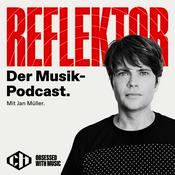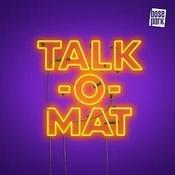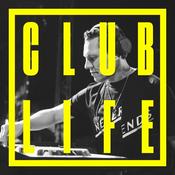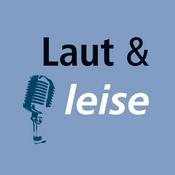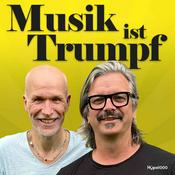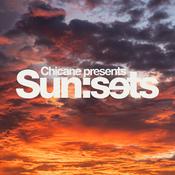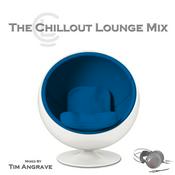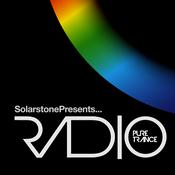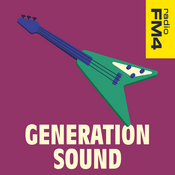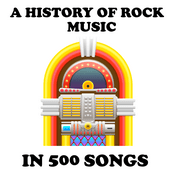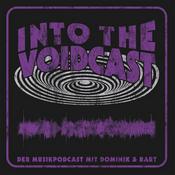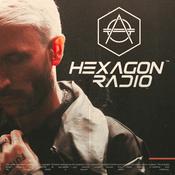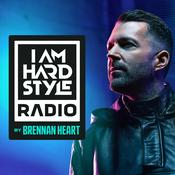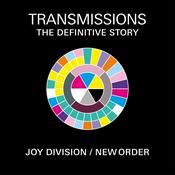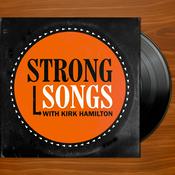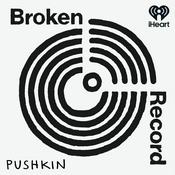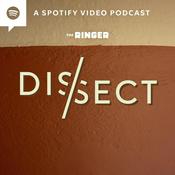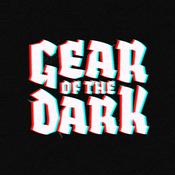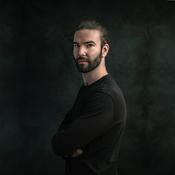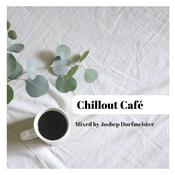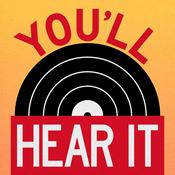1233 Episoden
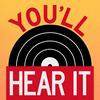
The Best New Jazz of 2025
29.12.2025 | 35 Min.
We're looking back at the best jazz releases of 2025. Listen with pianist Adam Maness as he breaks down and reacts to these great tracks.This is a new segment from the team behind You'll Hear It, and we're looking to continue this music discovery pod as a weekly series in 2026. Help us shape this series and leave us a comment with your feedback.Start your free Open Studio trial for ALLLLL your jazz lesson needs: https://osjazz.link/yhi 00:00 - The Best New Jazz of 202500:55 - "Spiral Dance" - Branford Marsalis Quartet02:30 - "Minor Blues Redux" - Kenny Barron4:54 - "Icarus" - Joshua Redman6:55 - "Thou Swell" - Gillian Margot, Geoffrey Keezer9:30 - "Southern Nights" - Sullivan Fortner12:30 - "Anything but now" - Cécile McLorin Salvant16:30 - "Everything Means Nothing to Me" - Brad Mehldau22:00 - "Over (feat. Yebba)" - Robert Glasper24:40 - "Carved From" - Mary Halvorson26:45 - "Old Folks" - Christian McBride29:00 - "Windows" - Chick Corea, Christian McBride, Brian Blade33:00 - "Mood Indigo" - Dee Dee Bridgewater, Bill Charlap

How to Live a Musical Life in 2026
26.12.2025 | 30 Min.
What does it really mean to live a musical life?As we look ahead to 2026, Adam and Peter talk about music as a way of being. Not a checklist, or a finish line, or something reserved for “professionals.” They share why they believe everyone is a musician, and why taste and curiosity matter more than optimization.Whether you're a musician, or a lover of music, anyone can lead a musical life.Start your free Open Studio trial for ALLLLL your jazz lesson needs: https://osjazz.link/yhi 00:00 - How to Live a Musical Life in 202607:00 - There is No Finish Line08:45 - All Humans Are Musicians19:10 - Find Your Own Taste28:00 - How We Choose Topics for You'll Hear It

"Sign o' the Times" – Prince
22.12.2025 | 1 Std. 29 Min.
Prince's Sign O' the Times is one of our most requested albums at You'll Hear It. But, there is a certain window of millennial that doesn't really "get" Prince. If that’s you, this episode is your on ramp into his music. We start with Prince's earliest albums, tracing his incredible run from 1978 through to 1986. By the time we hit 1987 (around the time our dear mid-millennials were born), you can hear exactly why Sign O’ the Times has become so beloved by critics and music-lovers alike.If you’re already a Prince fan (like us!), get comfy. Put on your purple rain coat. We talk through the influences we hear all over this music: James Brown, Marvin Gaye, Parliament, Earth, Wind & Fire. We share our apex moments from Sign O’ the Times. And yes… we’ve got a few quibble bits too.We'll be taking a short break in January, and returning with more great episodes in February 2026. We'll be dropping a few special episodes in the meantime, so keep an eye on the feed. 00:00 - Intro Jam: "U Got the Look"02:10 - Welcome + New at Open Studio03:50 - Coming Up Next Season05:10 - How We Make Decisions for the Show08:35 - Why "Sign O' the Times"?11:35 - "Soft and Wet" from For You (1978)14:50 - "I Wanna Be Your Lover" from Prince (1979)17:50 - "Head" from Dirty Mind (1980)19:15 - "Controversy" from Controversy (1981)22:35 - "1999" from 1999 (1982)25:15 - "Purple Rain" from Purple Rain (1984)28:40 - "Raspberry Beret" from Around the World in a Day (1985)29:45 - "Kiss" from Parade (1986)40:20 - "Sign O' the Times"45:40 - "Housequake" 47:20 - "The Ballad of Dorothy Parker"51:50 - "Starfish and Coffee"53:05 - "Slow Love"55:20 - "Hot Thing"57:10 - "U Got the Look"59:25 - Miles on Prince1:02:25 - "If I Was Your Girlfriend"1:04:00 - "Strange Relationship"1:05:20 - "The Cross"1:08:00 - "Adore" 1:09:50 - Apex Moments1:14:55 - Categories1:19:35 - Snobometer1:23:55 - Coming Up on YHI1:24:20 - Outro Jam: "U Got the Look"

"Sinatra at the Sands" — Frank Sinatra with Count Basie and His Orchestra
15.12.2025 | 1 Std. 3 Min.
Could this be peak Frank? Sinatra at the Sands captures the energy, the cool, and the incredible voice that made this crooner so iconic. Backed by the Count Basie Orchestra with arrangements by a young Quincy Jones, this live album still swings 60 years later!Sinatra at the Sands was recorded at a moment when Sinatra was emerging from a slump. Rock and roll dominated the airwaves, the Beatles were redefining popular music and crooning just wasn't cool anymore. But this album, recorded live in Vegas, shows a 50-year-old Frank sounding loose, confident, and completely at home in front of a band that swings like nothing else. Listen with us as we break down and react to the best of this swingin' album.Start your free Open Studio trial for ALLLLL your jazz lesson needs: https://osjazz.link/yhi 00:00 - Intro Jam: Fly Me To the Moon01:35 - The Sinatra-Basie Episode!03:45 - Is This Peak Frank?05:45 - The Mid-60s Culture Shift07:45 - "Come Fly With Me" 12:00 - The Quincy Influence14:45 - "I've Got You Under My Skin"17:30 - What To Listen For22:30 - "The Shadow of Your Smile"26:20 - Freddie Green's "Chunking" Technique28:15 - Sinatra's Vocal Gift33:30 - "Street of Dreams"35:50 - "One For My Baby (And One More for the Road)"38:40 - "Fly Me To the Moon"45:00 - "One O'Clock Jump"49:50 - Desert Island Tracks54:05 - Apex Moments59:05 - Categories1:03:20 - Coming Up Next Week

The Peter Martin x Strong Songs Interview
08.12.2025 | 1 Std. 26 Min.
How much do you know about Peter Martin? In this conversation with Kirk Hamilton of the Strong Songs podcast, Peter shares his musical influences and trajectory as a young jazz pianist. He brings us right back to the ’70s, ’80s, and ’90s with stories of meeting Wynton Marsalis, and playing with jazz legends like Betty Carter, Roy Hargrove and Joshua Redman.Plus, he shares his take on jazz education, the marathon runner's mindset and why anyone and everyone can play music.Check out the Strong Songs podcast: https://strongsongspodcast.com/Start your free Open Studio trial for ALLLLL your jazz lesson needs: https://osjazz.link/yhi 00:00 - Introducing Today's Episode02:50 - Peter's Strong Songs Interview06:00 - Peter's Musical Background08:00 - The Suzuki Method14:30 - Nurturing Talent 16:30 - How Peter Discovered Jazz20:30 - Meeting Wynton Marsalis27:00 - The Midwestern Jazz Scene33:20 - Juilliard, Roy Hargrove and the Young Lions35:40 - Moving to New Orleans38:30 - The Economics of Jazz in the 90s40:00 - Playing with the Legendary Betty Carter44:30 - Jazz Musicianship Then and Now47:15 - Roy Hargrove and the Summer of '9452:15 - Joining Joshua Redman57:45 - Rethinking Jazz Education1:02:15 - The Marathon Runner's Mindset1:07:20 - Kenny Kirkland: Awe & Inspiration1:15:00 - Roy Hargrove, The RH Factor and Hard Groove1:20:00 - My Funny Valentine - Miles Davis1:25:00 - How to Find the Recommendations in this Episode
Weitere Musik Podcasts
Trending Musik Podcasts
Über You'll Hear It
Höre You'll Hear It, Reflektor und viele andere Podcasts aus aller Welt mit der radio.de-App

Hol dir die kostenlose radio.de App
- Sender und Podcasts favorisieren
- Streamen via Wifi oder Bluetooth
- Unterstützt Carplay & Android Auto
- viele weitere App Funktionen
Hol dir die kostenlose radio.de App
- Sender und Podcasts favorisieren
- Streamen via Wifi oder Bluetooth
- Unterstützt Carplay & Android Auto
- viele weitere App Funktionen


You'll Hear It
App laden,
loshören.
